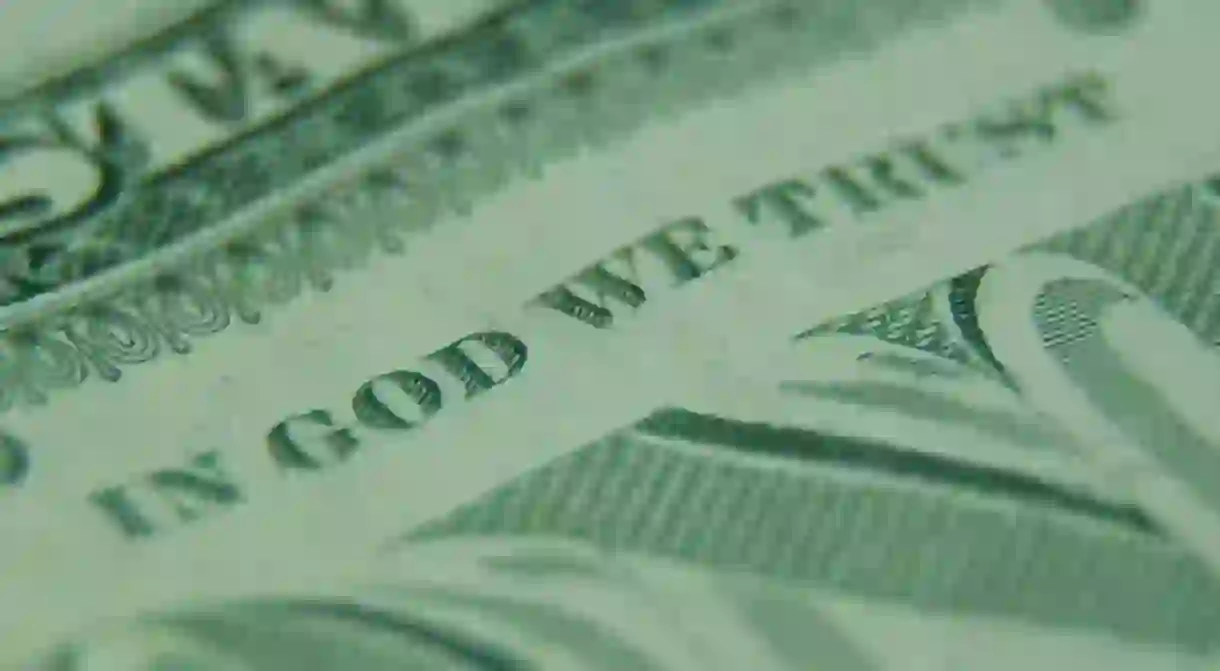The Story Behind America’s Official Motto: In God We Trust

Any infusion of religion into public life in the United States is bound to wind up in court before long.
The Establishment Clause of the First Amendment to the United States Constitution was intended to prohibit the entanglement of the state and the church or the establishment of any religion at all as synonymous or allied with the government.
Lawsuits are constantly filed by those who believe their right to freedom from religion is being threatened, from those who do not wish to say “under God” in the Pledge of Allegiance (required recitation for American public school students) to those protesting their tax dollars being spent on religious iconography in public buildings at Christmas.
But one of the most dominant forces in American life—the almighty dollar—has had religion baked right into it. Since the Cold War, the phrase “In God We Trust” has been emblazoned above the top of a Free Mason-esque pyramid with an eye peering out. And not everyone is happy about it. Indeed, Sacramento-based doctor Michael Newdow filed a federal lawsuit against the phrase appearing on the dollar, arguing that it places a “substantial burden” on atheists.
The first use of the phrase “In God We Trust” on a U.S. currency note appeared in 1864, during the Civil War, when a minister suggested that God should be incorporated into the everyday exchange of money. The two-cent coin was the first to have the phrase engraved on it. The following year, it appeared on other denominations.

But it was not until the height of a subsequent war, nearly a hundred years later, that “In God We Trust” became the official motto of the United States. It was 1956 when the Cold War against “godless communism” was reaching a fever pitch, and the motto was intended to draw sharp distinctions with the communist Soviet Union, where religion was banned.
A joint act of Congress established the new motto, which was printed on paper bills shortly thereafter.
While the motto has drawn the most controversy, at least in the courts, other elements of the paper bill design have drawn intense interest and debate. The pyramid and the eye on the bill have especially captured the attention of conspiracy theorists, who point out that the “all seeing eye” atop the pyramid on the dollar bill design is the Masonic emblem of the Great Architect of the Universe (otherwise known as the Masonic God). The Latin phrase “Novus Ordo Seclorum,” which also appears on the dollar bill, has drawn attention for its literal declaration of a new order, which is a code phrase for conspiracy theorists signifying that a global elite is pulling the puppet strings of worldwide commerce and governance. (While almost anyone who wants to become a Mason these days can be, the idea of the group as an elite and exclusive fraternity persists.)

But for those on the fringes and in the mainstream of society, the use of the Christian God is what rankles most. The courts have largely disagreed with those challenging the motto, arguing that it has a more secular and patriotic symbolism than its language would imply. The judge who examined Newdow’s case pointed to an earlier decision on a similar case in 1970, which found that the motto has “nothing whatsoever to do with the establishment of religion.”
So the motto, a relic of two very different but very heated wars, appears safe for now. And for those who dissent, there’s always Bitcoin.













